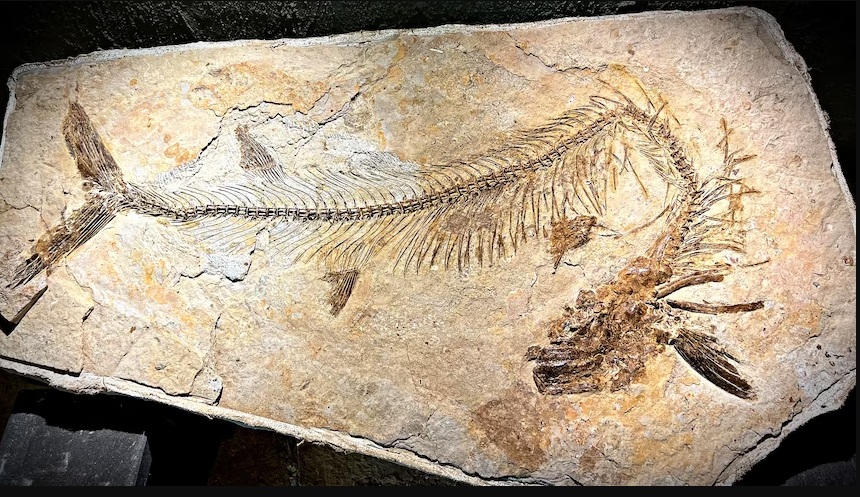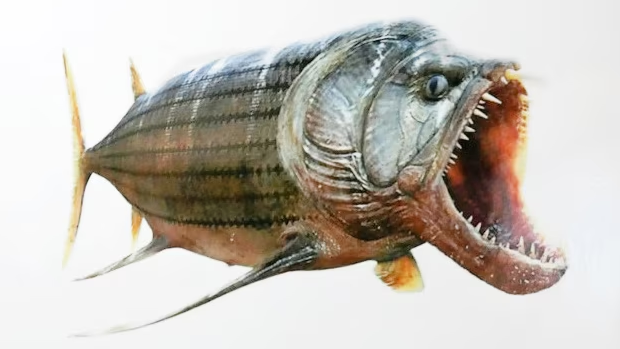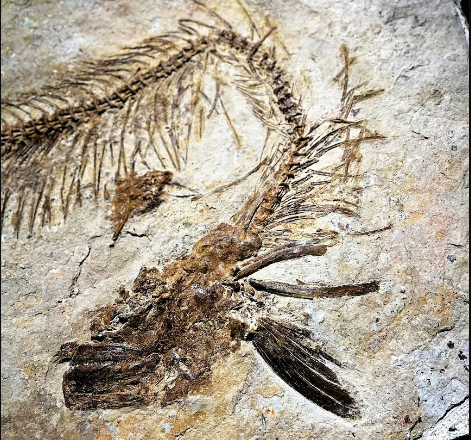@WFS,World Fossil Society, Athira,Riffin T Sajeev,Russel T Sajeev

An intact cooyoo fish fossil, about 1.6 metres long, has been discovered in Richmond.(Supplied: Kronosaurus Korner)
The fossil of a predator fish that existed more than 100 million years ago has been discovered in north-west Queensland.
Experts believe it is one Australia’s most intact fossils of the Cooyoo australis fish — a large carnivore that once swam Queensland’s inland Eromanga Sea.
The rare find was stumbled upon by a Northern Territory couple who had been digging at one of the public fossicking sites near the Kronosaurus Korner museum in Richmond — an area renowned for its significant fossil discoveries.
But the quality of the 1.6-metre specimen is not the only thing that has archaeologists excited.
“There are two extremely special things about this fish,” Kronosaurus Korner founder and chairman Rob Ievers said.
“This thing has all its ribs, all its vertebrae … a complete head with large jaws, and a mouthful of sharp teeth.”
The cooyoo was of such high quality, curators were able to see the contents of its stomach.
“This is most interesting because you don’t find this very often at all, we can see what this fish had for its last meal,” Mr Ievers said.
It turns out fish was on the menu for this cooyoo.
“When you get a close-up view of the specimen, you can see the little vertebrae, you can see a small fish head and some other remains of a fish in the area where the cooyoo’s stomach would have been,” Mr Ievers said.
He said the tidal nature of the Eromanga Sea and the presence of other carnivores meant it was rare to find a whole specimen.
“Because, when these things died, this sea was tidal so there was movement and these fish got displaced through the natural process of rotting and with other animals feeding off them,” Mr Ievers said.
A beastly sight

Cooyoo had large conical teeth within deep jaws, used for swallowing prey whole.(Supplied: Kronosaurus Korner)
With a gaping underbite lined in conical teeth and a bull-dog head, the Cooyoo australis had a face only a mother could love.
Several sets of fins, a long body, and forked tail would have helped it torpedo through the water, threatened only by large marine reptiles and sharks.
One of the largest semi-articulated cooyoo specimens was discovered by Gary and Barb Flewelling and Anthony Saffioti in 2011 in Richmond.
The 2.5-metre long fossil nicknamed “Wandah” is currently on display at Kronosaurus Korner.
Source: Article by By ABC North West Qld /Zara Margolis and Larissa Waterson
@WFS,World Fossil Society, Athira,Riffin T Sajeev,Russel T Sajeev



 March 2nd, 2023
March 2nd, 2023  Riffin
Riffin 
 Posted in
Posted in  Tags:
Tags: 